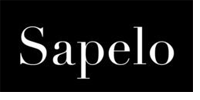From Ebony Magazine, April 1953
Today’s post is from an Ebony Magazine article published in 1953 that explored the growing popularity of Islam among Black American jazz artists. The article provides a window into the important connection between jazz and the spread of Islam among Black Americans from the 1940s onward — especially for those who identified with Sunni Muslim communities or the Ahmadiyya movement. It centers around the saxophonist Lynn Hope (also known as El Hajj Abdullah Rasheed Ahmad), who served as a leader and teacher of a Sunni Muslim community in Philadelphia that was affiliated with the historic Adenu Allahe Universal Arabic Association founded by Professor Muhammad Ezaldeen. A few other iconic be bop jazz artists are also mentioned, including Art Blakey and Ahmad Jamal, both members of the Ahmadiyya Muslim community. The piece highlights Islam’s appeal as a potential antidote for the evils of white supremacy, anti-Black racism and racial oppression.
The author recounts how Black Muslim jazz musicians like Hope and his band used their religious identity to subvert the discriminatory policies of segregation in the South.
They were able to “pass” since Arabs and “Eastern peoples” were often designated as white in segregationist America. This was attractive to some, as it indicated one’s ability to reconnect to an affirming history and cultural identity, countering “any sense of inferiority as a Negro” as the article puts it. By allowing Black artists to pass, Islam also offered a potentially powerful survival tool.
Hope’s Islamic identity and practice permeated his daily life, including his performances. His “spectacular [musical] routine” in which he was known to “parade across the bar” is cited several times in the article, along with pictures of Hope standing on top of the bar sporting a white turban during a performance. Hope is, however, also depicted as being quite devout.
Reading the article today, we might wonder whether or not he felt himself in a compromising position. By all accounts, Hope was an exceptionally knowledgeable Muslim who took his religion quite seriously. Yet, his profession carried him into some spaces (i.e., on top of the bar) that many Muslims today would deem cringeworthy. But the article also discusses how Hope drew upon Islamic teachings to help guide his business practices, contracts, paying his band members and how he spent his income. Therefore, from another angle, we might take inspiration from his ability to skillfully navigate the music industry without hiding or compromising his faith. This last point is particularly salient for Muslims living in America today. Sixty-five years after this article was published, Muslims still struggle with some of the same issues. For instance, how does one balance their professional life with a desire to pursue Islamic education? Today, we have weekend intensives and summer retreats. Hope took a year off from music to study Islam, along with history and Arabic, which enabled him to serve his religious community as a teacher. And while some Muslims work hard to avoid public displays of their faith on the job, Hope showed up to work wearing a turban.
We hope you enjoy this week’s fascinating retrospective!















Ahmad | April 1, 2018
|
As Salamu Alaykum, I held a symposium in the year 2001 with the Keynote speaker Dr. Sulayman Nyang. I this lecture he talk about how Islam came to the state by way of the African American muslims. He cited Dizzy Gillespie’s book To be or not to Bop. Where he mention how a lot of the jazz musicians of the 50’s were coming back from the visit to Africa and bring Islam with them and changing their lives.